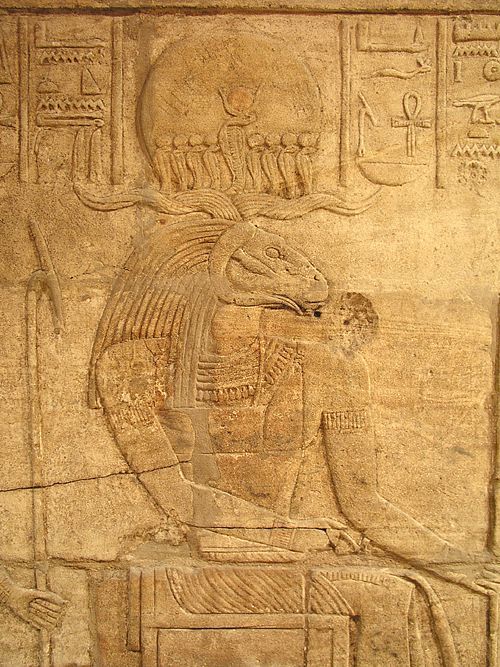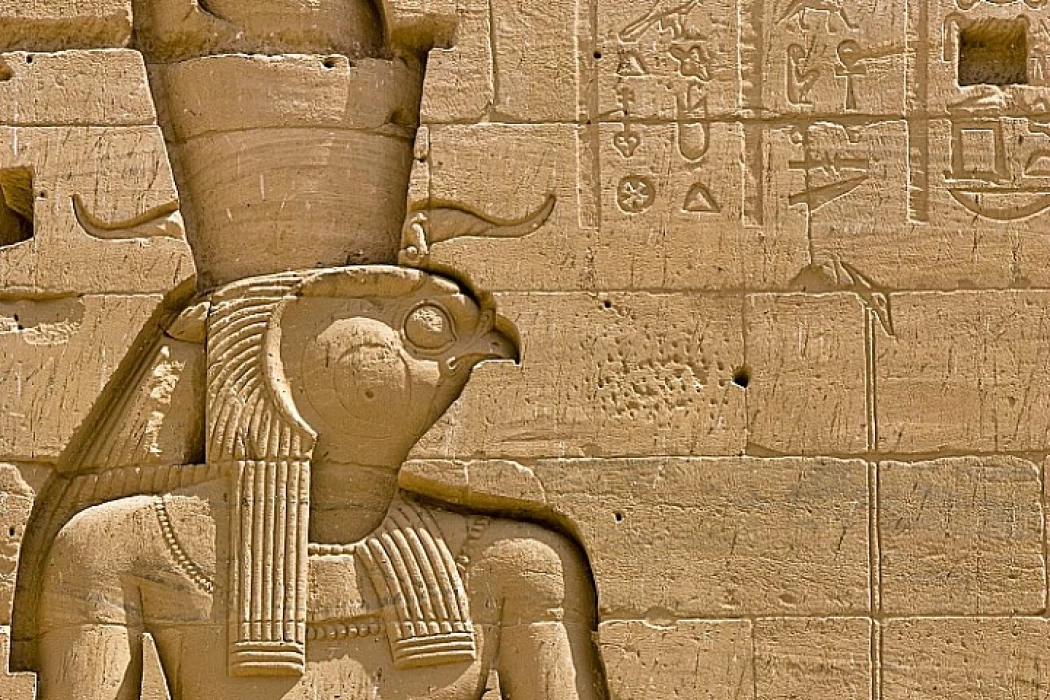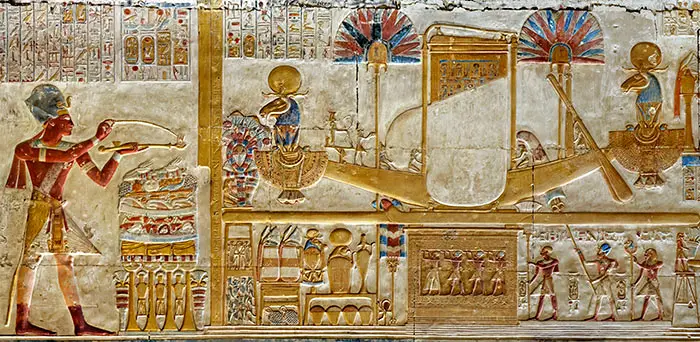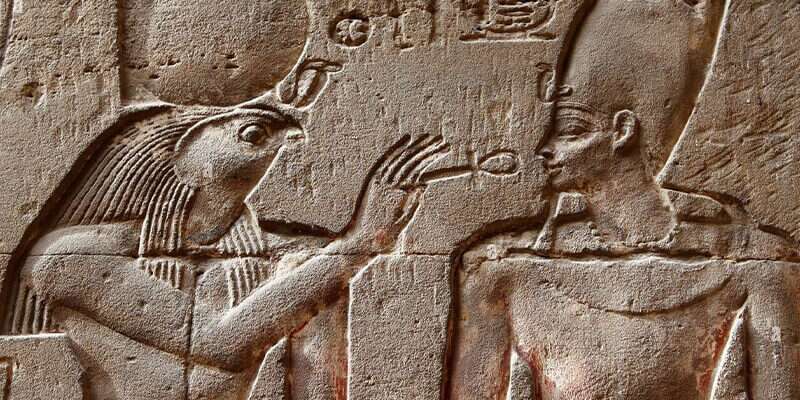The most significant god among all Egyptian gods is Amun-Ra. All other deities including himself are worshiped as creations of him. He is hence all-powerful. Devotees clustered around the Amun-Ra Temple in Thebes worshiped him. For several millennia, Egyptian religion was fundamentally monotheistic due to the cult of Amun-Ra. Actually, Amun-Ra is a fusion of two ancient gods: Ra, the sun god, and Amun, the god of air. Amun-Re, or Ammon, is another name for Amun-Ra.
Meaning and Symbolism:
Amun was mostly unknown before the Middle Kingdom (c. 2055–1650 BCE), despite his name meaning “The Hidden One” his identity was combined with that of the esteemed and highly sun god Ra of Heliopolis in the north to signify his newfound significance. Amun-Ra was usually portrayed as a ram-headed god wearing the sun disk surrounded by the uraeus (cobra), or as a man with a crown decorated with two towering plumes. Combining symbols of sun energy, fertility, and monarchy, this imagery emphasized Amun-Ra’s dual roles as the ultimate source of cosmic order and as a creator deity.


Worshiping:
The evolution of Amun’s worship has a rich history. He was initially a divinity that was only revered in Thebes. Amun rose to prominence after the pharaohs relocated their capital to Thebes. He became more significant throughout the Eighteenth Dynasty after assimilating with Ra.
Numerous monarchs of the Eighteenth Dynasty ordered frescoes depicting Amun-Ra as their father. This was also the method used by kings whose legitimacy was questioned to support their rule. Hatshepsut ordered murals depicting Amun-Ra as her father when she started to rule on behalf of her stepson. She maintained her pharaohship till her death by using these murals as proof of her regal authority.

Amun-Ra Temples:
Throughout Egypt there were temples dedicated to Amun, and a number of them were erected or refurbished by Ramses II. Among these are the temples at Deir el-Medina, Luxor and Karnak:
1- Deir el-Medina is situated next to the Valley of the Kings and across from Thebes on the western bank of the Nile. Originally constructed in 1500 BC, Amun’s temple in Luxor is still a bustling place of worship today.
2- Amenemope, also known as Amun of Opet, was a special form of Amun that was worshiped. The Luxor Temple is often referred to as the Southern Opet or the “Place of Seclusion.” Located in the center of ancient Thebes, this temple was connected to Karnak by a processional path.
3- The Great Temple of Amun is the focal point of the biggest temple complex ever constructed by humanity, which is located at Karnak Temple. This temple was expanded upon or reconstructed in parts by successive pharaohs.
It’s sure that Amun-Ra is a representation of the Egyptians’ tribute to cosmic unity and divine authority. This was the highest god in ancient Egypt as he represented the balance between hidden potential and visible manifestation that signified procreation, reproduction, fertility and solar energy. The worshiping, rituals, and lasting impact of this deity till date continue to captivate us by reminding us of ways through which ancient civilizations sought to understand and relate to what is not known about the universe.



0 Comment